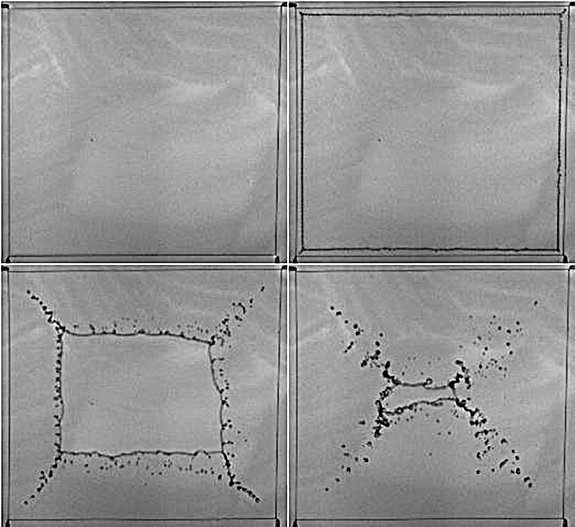Life of a Free Soap Film
H. C. Mayer
R. Krechetnikov
University of California at Santa Barbara

Sequence of images showing the evolution of a soap film uniformly released from a wire frame, which was heated by a high voltage microsecond impulse.
Almost all of us at some point in our lives have had the experience of popping a soap bubble and marveling at the amazing speed with which the bubble disappears. It is relatively easy to rupture soap films from a point: a gentle touch with a fingertip will do the trick. But is it possible to 'cut a soap film with scissors' as we can cut paper or fabric? And if so, will we see something different? This was a basic question that motivated this research.
Although extensively explored in the past, there are still many questions regarding the retraction of liquid films that remain unanswered and many experiments that stay unperformed because it had been thought impossible to release a liquid film uniformly along an edge. Indeed, all prior experimental works have focused on measurements of the retraction of thin liquid films using rupture from a point. Our idea was to pass a high-voltage microsecond impulse through the wire frame supporting the soap film, which led to the film edge boiling and its uniform release. Experiments were performed for different frame shapes (square, rectangular, and circular) and sizes: the resulting patterns captured with a high speed digital camera and shown on still images are amazing and make one to think about non-trivial interaction of the film retraction and wave propagation in the soap film. This new approach for freeing soap films allows one to study features in their behavior which were not accessible before.
Reporters and Editors
If any reporters are interested in using this image, please contact Dr. Rouslan Krechetnikov, Department of Mechanical Engineering, University of California at Santa Barbara, Santa Barbara for permission.
